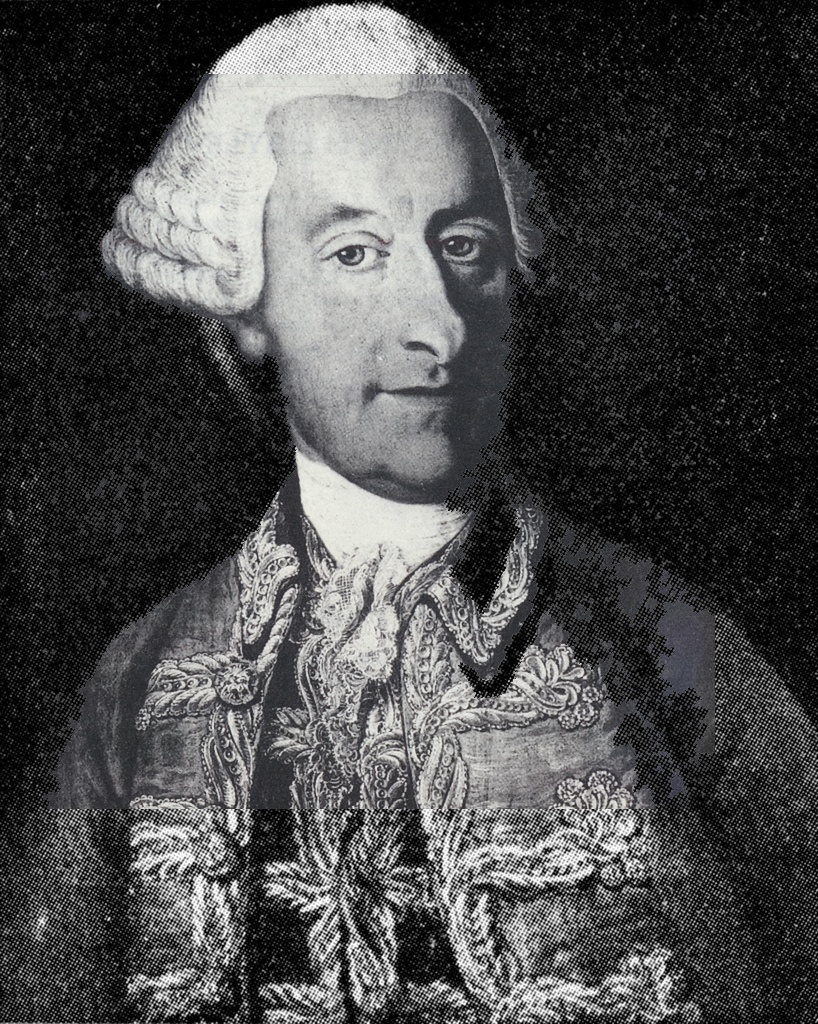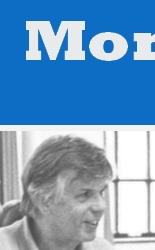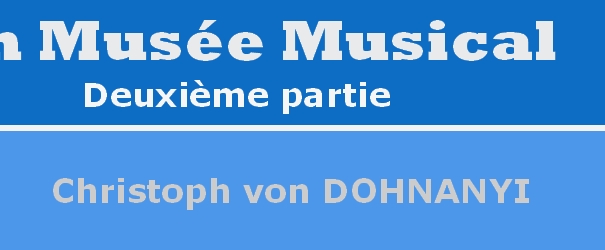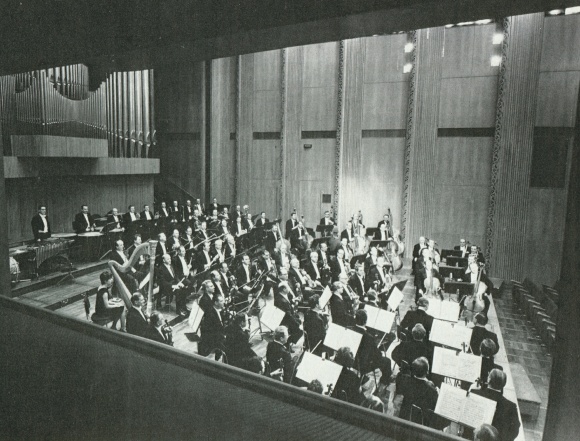Joseph HAYDN
Symphonie No 11 en mi bémol majeur
Koelner Rundfunk-Sinfonie-Orchester
Christoph von DOHNANYI, 1969
Selon les notes de H.C. Robbins Landon publiées dans le 8e volume, symphonies 1 à 19 de l'intégrale des symphonies de Haydn enregistrée sous la direction d'Antal Dorati, cette symphonie fut composée entre 1759 et 1760:
"[...] After World War II, an old collection of musical manuscripts from the Library of Counts Festetics in Keszthely Castle was deposited in the National Library at Budapest, which institution also houses the Esterhazy Archives. [...]this Festetics Collection[...] included «inter alia» a whole series of early Haydn symphonies, the copies of which were stamped with the signature of a „Fürnberg Obrist Lieut’’. It was clear that we were dealing with a member of the family for which Haydn wrote his first string quartets in Weinzierl Castle near Melk (Lower Austria). (It is now thought that it was about 1757 that Haydn composed these quartets for Carl Joseph Edler von Fürnberg at Weinzierl.)
In 1759 Haydn was engaged as music director to Count Morzin, who had a pretty summer castle at Lukavec in Bohemia. As is well known, Haydn wrote his first symphonies for Morzin. It was not known, however, exactly which symphonies Haydn composed at Lukavec, though the composer himself always maintained that what we know as Symphony No.1 was actually his first work in the form. The newly discovered collection from Lieut.-Col. von Fürnberg proved to be a sensation. It was a series of works, obviously by a number of Viennese professional copyists, some of whose hands were already well known to. us. The copies all appeared — on the evidence of the paper and watermarks — to be very early, perhaps as early as about 1760. It soon became clear that Haydn himself supervised this series; he made small corrections and one major change (in the horn parts of No. 11’s opening movement). [...]
Thus the new symphony series was able to establish which symphonies Haydn wrote for Lukavec, i.e. between about 1757 (when he probably began writing symphonies) and May 1761 (when he went to Eisenstadt as Vice-Capellmeister to Prince Esterhazy); the series cannot have been prepared much later than May 1761, because there is no work included in the MSS. which is known to have been composed after Haydn started to compose for Eisenstadt; it established the textual basis for all these early symphonies. The trumpet and timpani parts of No. 33, which are not always present in early sources, are included in the Fürnberg MS. and are thus indisputably genuine; conversely, Symphony No.37, which exists in one important MS. with trumpets and timpani, is scored in the Fürnberg MS. only for oboes, horns and strings.
The Fürnberg symphony MSS. include Nos. 1-5, 10, 11, 15, 18, 27, 32, 33, 37 and ‘A’ (I: 107) and these are Haydn’s earliest works in the form, composed for the Morzin family at Lukavec Castle or in Vienna, where the Count spent the winter. [...]"
Dans l'ordre chronologique, cette 11e symphonie est la 13e composée par Joseph Haydn, écrite entre les symphonies No 25 et 5.
Une courte description:
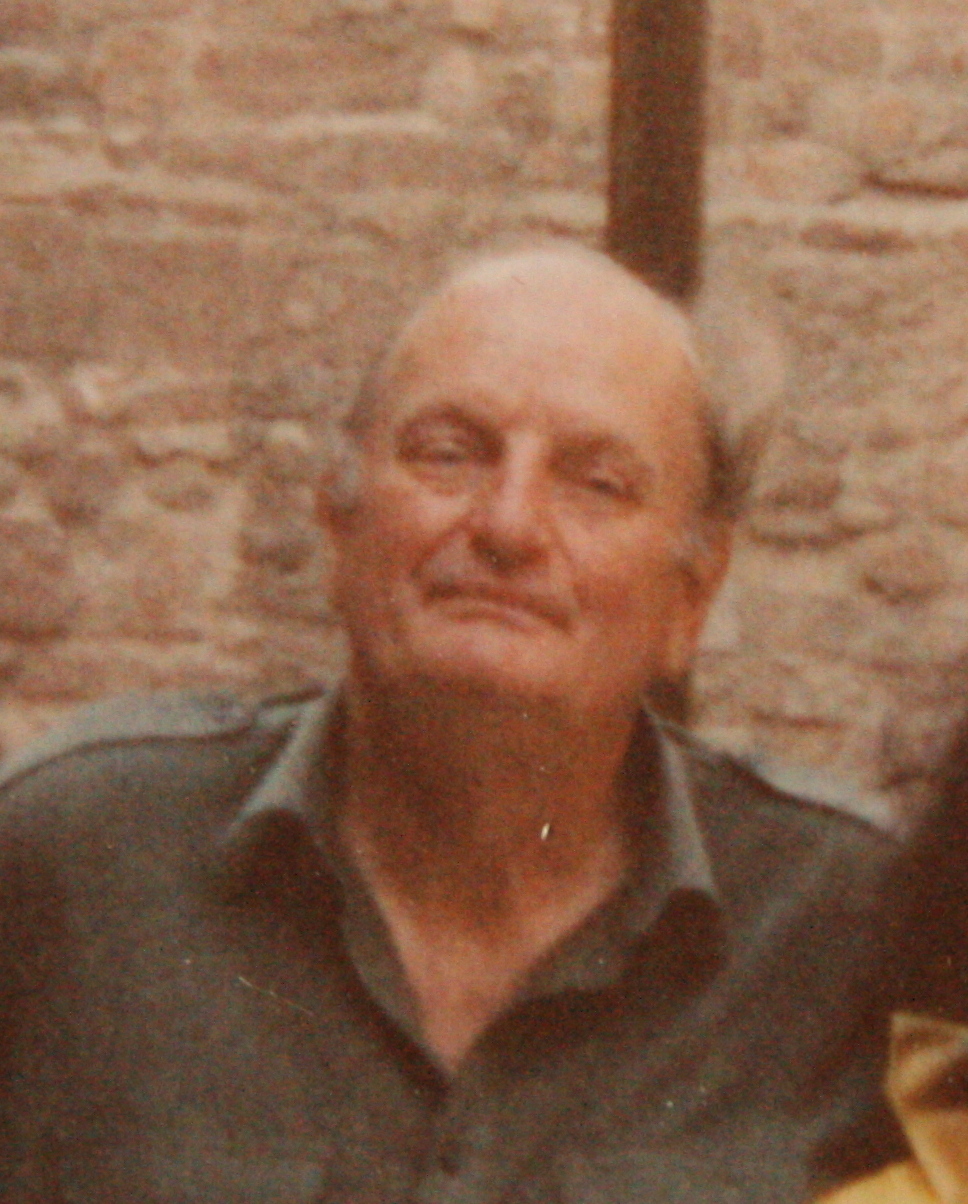
"[...] Symphony No. 11 in E flat, Scoring: 2 oboes, 2 horns and strings, to which we have added a bassoon and harpsichord as part of the «continuo».
A fine church-sonata Symphony, with a gravely beautiful opening «Adagio», scored for horns and strings (oboes «tacent»). Haydn made some important revisions in the horn parts of this movement, just before the double bars of both sections (score readers: 28ff., 75ff.), adding sustained notes throughout rather than a crotchet to reinforce the «f» at bars 28, 30, 75 and 77). He added these personally to the horn parts of the Fürnberg MSS. in Budapest. (*)
The second movement introduces the oboes. The «Allegro» is the hard-driving, tightly rhythmic foil to the luxuriant spaciousness of the opening «Adagio». The second subject is a contrapuntal variant of the first subject, but scored only for the two violins, «piano». Throughout we note that the main theme has been so worked out that it can be contrapuntally exploited (e.g. in canon at the recapitulation, bars 112ff.)
The «Minuet» (Haydn’s spelling) is of an irresistable rhythmic drive and of a bizarre construction (the main section twelve bars, subdivided into seven plus five). The Trio, for strings only, has an odd syncopated pattern that fills the violin parts, the actual syncopations sliding unobtrusively on second to first violin and back again.
The racy and sophisticated Finale is built on the retrograde of the main theme of the second movement (originally: e flat - f - g -a flat, whereas in the Finale a flat - g -f-e flat) but using the syncopated rhythm of the trio. It is on a larger scale than most other Morzin finales, as indeed all the church-sonata symphonies exceed in physical size and emotional scope the other, more normal works of the period. [...]" cité des passionantes notes de Howard Chandler ROBBINS LANDON référenciées au début de cette page.
[*] H.C. Robbins Landon ajoute dans son ouvrage «The Symphonies of Joseph Haydn, Universal Edition & Rocklife, London 1955, p. 221» "[...] The Adagio of No. 11 is burdened with an excessive use of triplets, the orchestration is rather crude, particularly as regards the strings; and the horns are scarcely used at all. The movement has a certain resemblance to the very earliest divertimenti. [...]"
Pour plus de détails sur les différents mouvements de cette symphonie, voir cette page en allemand de Wikipedia.
L'Orchestre symphonique de la Radio de Cologne
dans la grande salle de la Maison de la Radio, une vue prise depuis la régie
À l'époque de cet enregistrement - 1969 - Christoph von DOHNANYI était le chef titulaire de l'Orchestre symphonique de la Radio de Cologne (Kölner Rundfunk-Sinfonie-Orchester).
Voici donc...
Joseph Haydn, No 11 en mi bémol majeur, Koelner Rundfunk-Sinfonie-Orchester, Christoph von Dohnanyi, 1969
 1. Adagio cantabile 05:10 (-> 05:10)
1. Adagio cantabile 05:10 (-> 05:10)
 2. Allegro 03:21 (-> 08:31)
2. Allegro 03:21 (-> 08:31)
 3. Minuetto - Trio 04:14 (-> 12:45)
3. Minuetto - Trio 04:14 (-> 12:45)
 4. Presto 02:19 (-> 15:04)
4. Presto 02:19 (-> 15:04)
Provenance: Radiodiffusion, archives WDR resp. ARD
que vous pouvez obtenir en...
pour un téléchargement libre
4 fichier(s) FLAC et 1 fichier PDF dans 1 fichier ZIP
